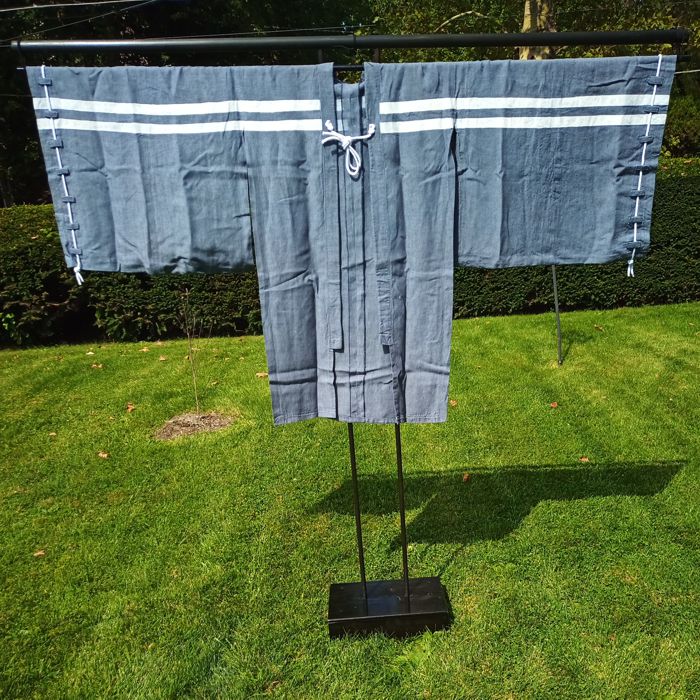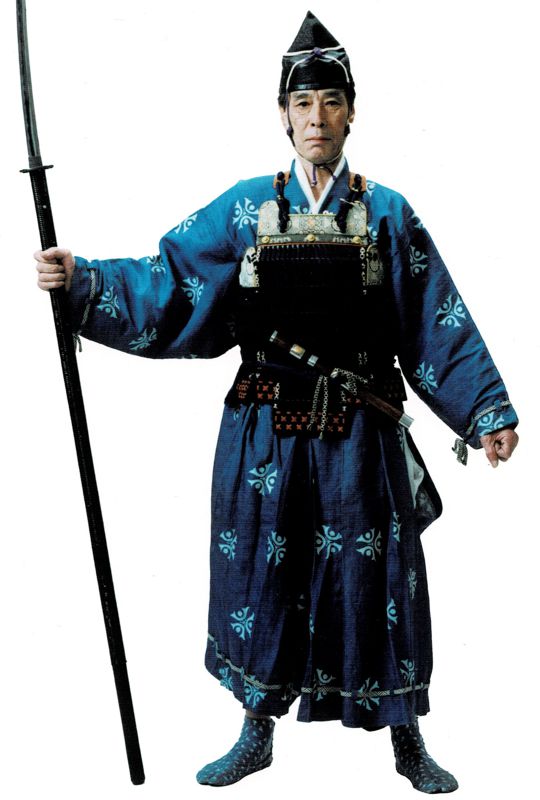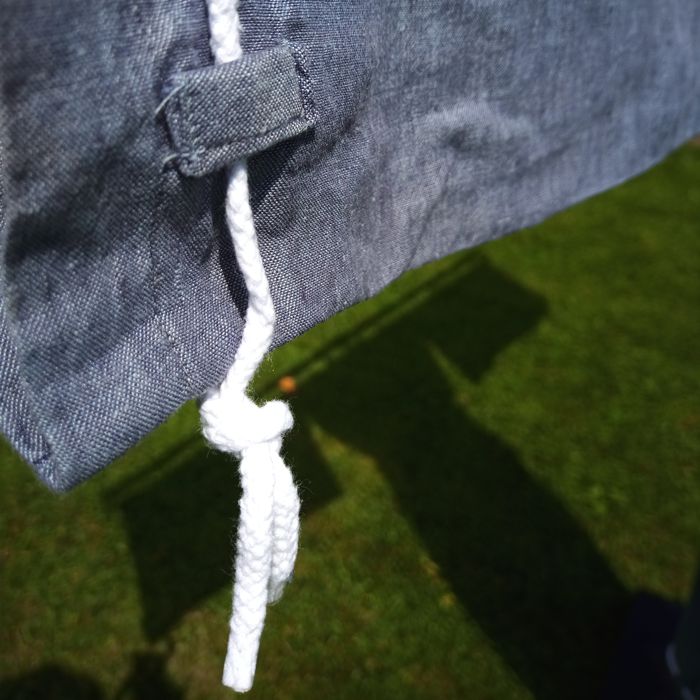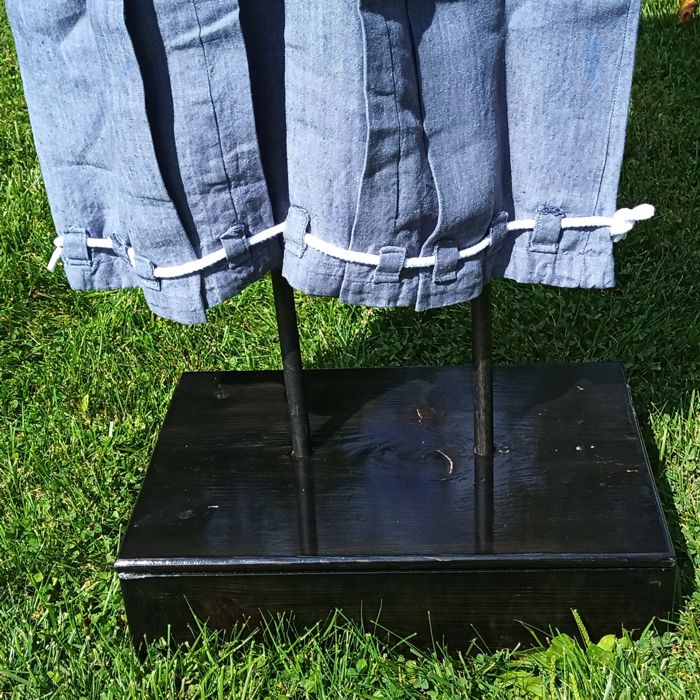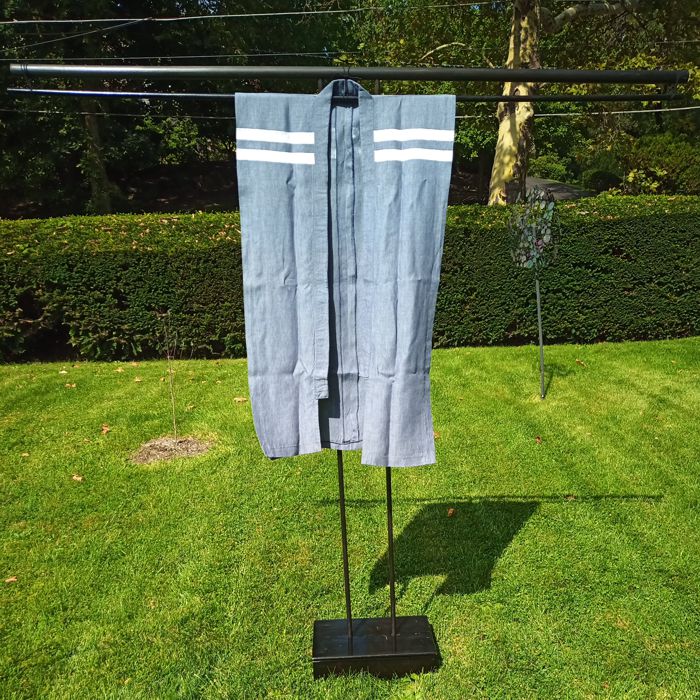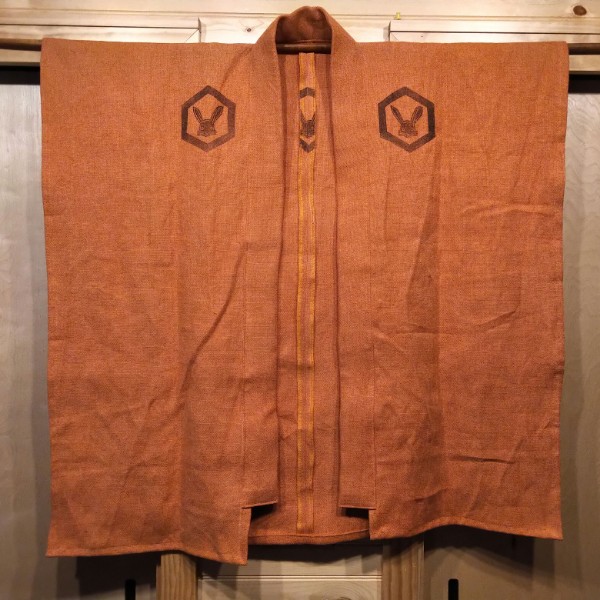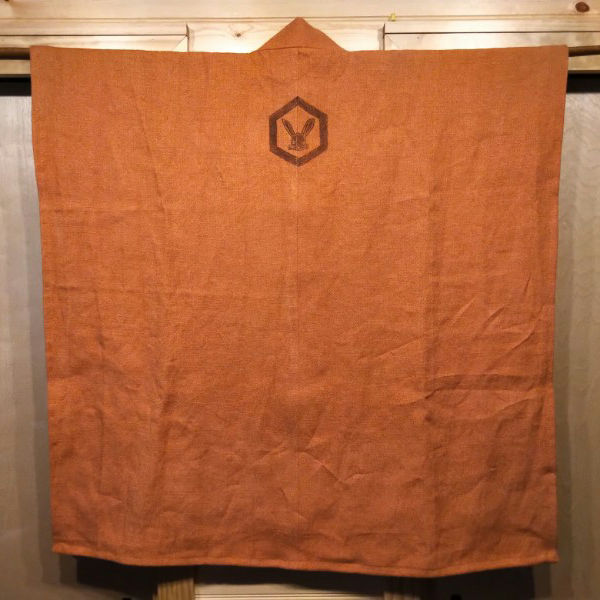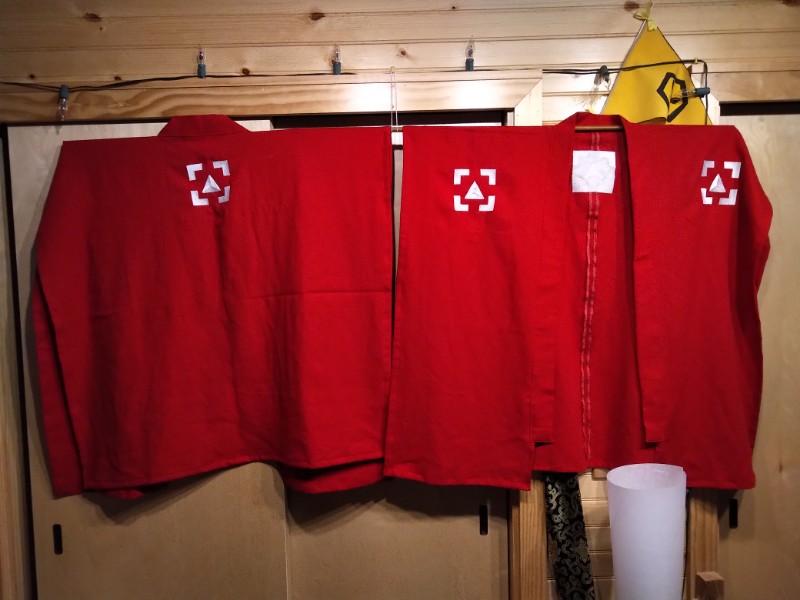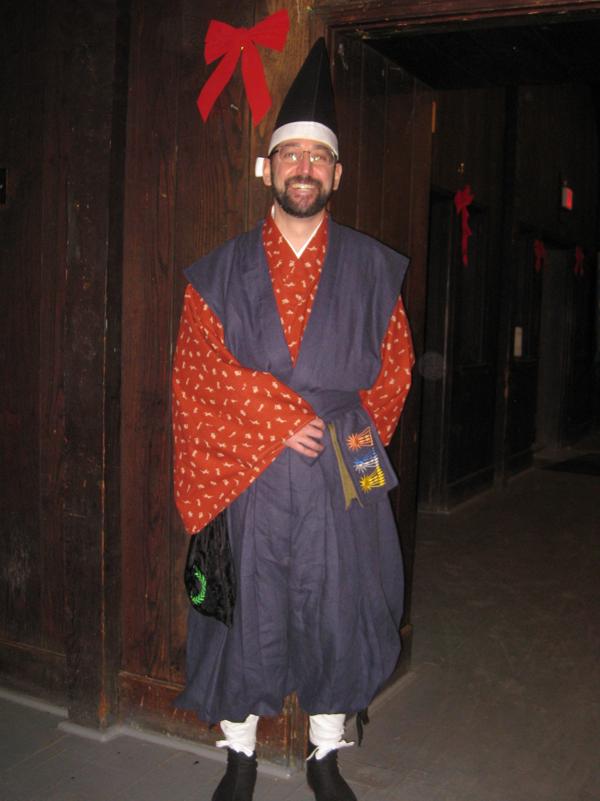I completed this project back in early May of this year. I wore it to War Practice and to court at Pennsic, but I am only just now getting around to documenting it. Sorry I didn’t get any pictures of me actually wearing this outfit. Anyway, I wanted a less-formal and lighter-weight hitatare than my others. This one is made from a mid-weight linen, instead of the heavy-weight linen and hemp from which the others are constructed. I painted some white stripes on the fabric so that it wouldn’t look like a bedsheet. Here is the view from the front:
From the back, you can see that there are also stripes in the back, and that the hakama do not have a koshi-ita panel on the back. Some hitatare of late period had these panels, but since I do not tend to add them, this garment does not.
The sugata part of this post’s title of course means basically “outfit”. The hitatare itself is the upper-body over-garment. You have to make the body panels quite long if you don’t want the tails pulling up out of the hakama waistband.
Here is a close-up of the painted stripes. I have stopped using the “Jacquard Neopaque” acrylic fabric paint for most things, and I have switched over to “Jacquard Textile Color” fabric paint. This does not have the same vinyl-esque feel as the Neopaque, but it works well and still resists bleeding into the fibers. I applied the paint after the garments were constructed, so the stripes would match across the seams.
At the sleeve ends, the sleeve cords run through “belt loop” style attachments. There’s a hitatare in the Kure red book that uses these attachments, and I have found them to be durable.
Here’s a close-up of one at the bottom of a sleeve. You can clearly see that I have not bothered to braid my own cords yet for this outfit. It uses store-bought cotton braid. The belt loops are made by starting with a rectangle of fabric that is twice as long and four times as wide as the eventual loop. The ends of the rectangle get folded in to the center, followed by the sides getting folded in to the center. The loop is then folded in half along the length to make a short 4-layer strap, and stitched along the long edge to hold it closed. Stitching it on to the garment seals the ends of the loop.
Similar loops are at the cuff end of each leg. I only put loops on the outsides of the pleats, so they hold the pleats in place. I’m not sure if this is historical or if the exemplar just has narrower legs.
I also made a kataginu that matches the hakama so that I don’t have to roast if it is very hot. A kataginu is basically a sleeveless hitatare.
So there, now I have four hitatare sugata. This one went through the post-Pennsic laundry without falling apart, so I consider it to be a success.



